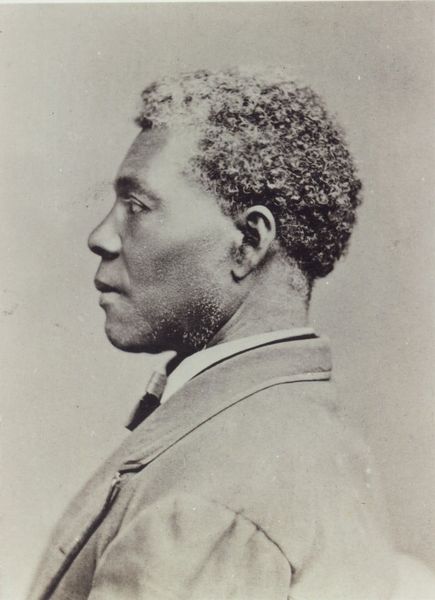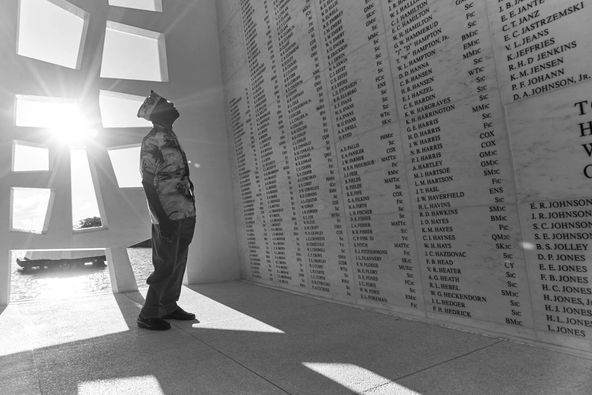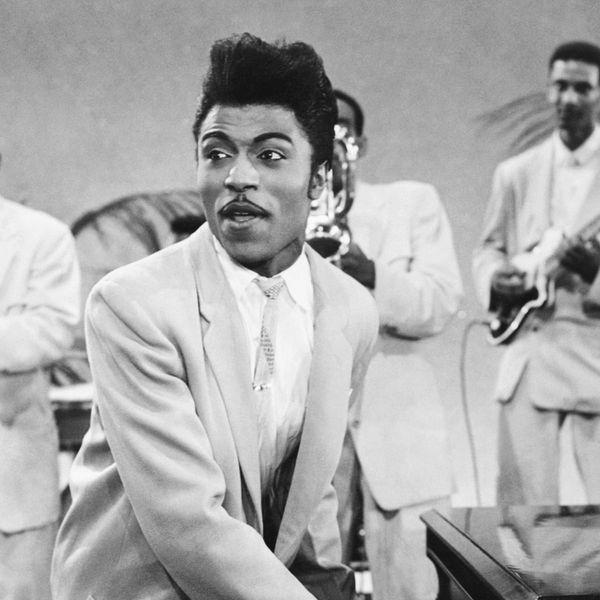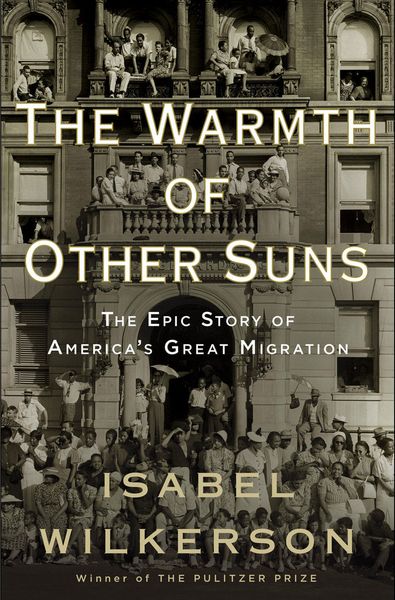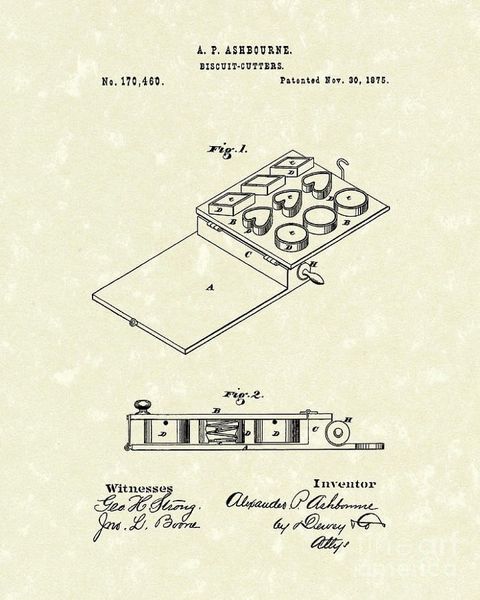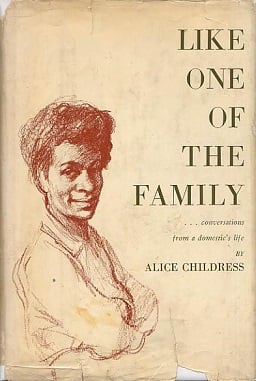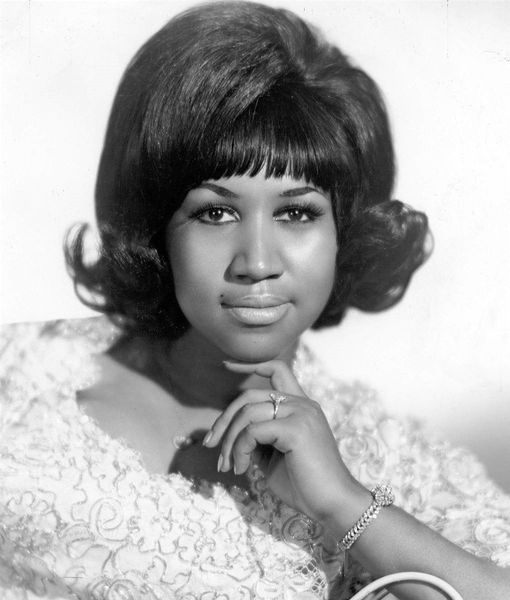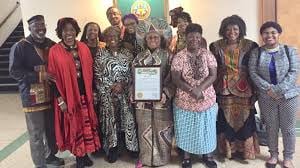GM – FBF – Today’s American Champion was a formerly enslaved person who served as the model for the emancipated slave in the Emancipation Memorial (1876) located in Lincoln Park in Washington, D.C. He was the subject of an 1885 biography, The Story of Archer Alexander, written by William Greenleaf Eliot.Today in our History – December 8, 1880 – Archer Alexander dies.According to Eliot, Alexander was born in approximately 1815 on the plantation of the Ferrell family in Fincastle, Virginia. Archer’s father was sold by Ferrell to pay off debts while Archer was still a child. Shortly thereafter, Delaney died and left Archer Alexander to his son, Tom Ferrell, who moved to Missouri, taking his slave with him. Alexander’s mother, left behind in Virginia, died only a few months later. Alexander himself was hired out by Ferrell to local brickyards in St. Louis, until he needed even more money, when he sold Alexander to a farmer named Richard H. Pitman who lived on the border of St. Charles County and Warren County.Archer Alexander had married an enslaved woman named Louisa, who was owned by James Naylor, and she accompanied him. Alexander was purchased in 1844 and worked for Hickman for more than twenty years. He was sufficiently respected by Naylor that he was given the responsibility of functioning in an overseer capacity on the farm. During this time, Archer and Louisa Alexander became the parents of several children, some of whom Naylor sent away because of their behavior.Before the onset of the American Civil War, Alexander listened to the political discussion and determined that he would flee from his life in slavery if the opportunity arose. In 1863, Alexander covertly notified a group of Union troops that a bridge they intended to use had been sabotaged by Confederate sympathizers. He was shortly thereafter suspected of being the source of this information and had to flee the farm. He was captured by slave catchers, but he broke free and returned to St. Louis.He went downtown to look for work in one of the public markets. Eliot’s wife was there as well, having come to hire a servant. She hired Alexander, and brought him home. Alexander proved to be reticent about his recent history, leading Eliot himself to suspect that Alexander was an escaped slave, which left him in an uncomfortable situation.He had some years earlier stated that he personally would never return a fugitive slave to his former master, and he now faced that very situation. He obtained a certificate to keep Alexander for thirty days, and quickly wrote Hickman, offering to pay Alexander from him. Hickman turned down the offer, vowing he would have the slave back.Two days before the expiration of his certificate, Alexander was found by some slave catchers Hickman had evidently hired. Eliot managed to find Alexander and keep him safe until the Emancipation Proclamation was issued.Alexander and his wife were reunited, if only for a short time. In 1866, Louisa decided to return to Naylor’s house for some things she had left there. Alexander would later find out that Louisa had died, two days after her arrival, of an unidentified disease.In 1869, Eliot was working with a group to build a statue of Lincoln. The funding for an Emancipation Memorial, featuring a statue of Lincoln, had begun with a $5 donation from a former slave, Charlotte Scott, from Virginia. All of the initial funds raised were from donations from former slaves, later matched by donations from The Western Sanitary Commission, a St. Louis-based volunteer war-relief agency. Thomas Ball had an acceptable model made, but Eliot’s group wanted to have a real freedman pose for it. Eliot gave Ball a photo of Alexander, and he was chosen as the model.In 1876, the statue was unveiled, with a number of notable people in attendance, including President Ulysses S. Grant, members of his cabinet, Supreme Court justices, other government figures, and Frederick Douglass, another former slave. However, neither Alexander nor Eliot was present.Eliot and his son, Christopher, were with his friend Alexander when the latter died in 1880 in St. Louis, Missouri. Archer gave Christopher a gold watch for teaching him how to read. Eliot noted that Alexander died thanking God that he had died in freedom.According to DNA research, Muhammad Ali’s paternal grandmother was Alexander’s great-granddaughter. Research more about this great American Champion and share it with your babies. MAKE IT A CHAMPION DAY!
Tag: Brandon hardison
GM – FBF – Today’s American Champion was one of the men some 100 survivors of the attack on Pearl Harbor will gather in Hawaii today 79 years after the day which drew the US into World War II.
GM – FBF – Today’s American Champion was one of the men some 100 survivors of the attack on Pearl Harbor will gather in Hawaii today 79 years after the day which drew the US into World War II. The Japanese air and naval strike on the American military base claimed nearly 2,400 lives, destroyed over 160 aircraft and beached, damaged or destroyed over 20 ships. President Franklin D. called it ” a date which will live in infamy” when he addressed the Congress the next day asking to declare war with Japan. Today in our History – December 7, 1941 – Phoenix Nelson G. Mitchell, Jr. helps fight off the Japanese attack on Pearl Harbor, Hawaii.Nelson was born January 19, 1920 on a family farm in Bivins, TX (Cass County) where he picked cotton, tended a vegetable garden, cared for livestock, and engaged in other daily chores with two sisters and five brothers. There was very little time for play, except for church on Sundays and occasional picnics. He enjoyed baseball and basketball when time allowed.He is preceded in death by his wife, Fannie, his father, Nelson Sr., mother Wafie, sisters Surreah and Marie, and brothers Maurice, Risdon, Leondas (L.K.), William Morris and Roscoe.Nelson joined the U.S. Navy in August 1940—not to see the world—but to provide extra income for his family. In the face of limited opportunities, he served honorably, diligently, and without bluster as a stewards mate and cook.Until his death, it was widely believed that he was the last living African American survivor of the assault on Pearl Harbor on Sunday, December 7, 1941. During the attack, he was aboard the Destroyer USS Jarvis. Nelson also spent time aboard the USS Selfridge, the USS Case, and a Navy oil tanker during his eight years in the Navy.Nelson purchased 3.5 acres of land in southeast Phoenix (near the Tempe border) in 1945 and built a “modern” house on the property in 1948-49. He married Fannie Lee Epps of Linden, TX in 1946 before leaving the Navy in 1948. When they put down roots in Phoenix, they raised three children, many cows (including a trio named Blackie, Brownie and Hamburger), hundreds of chickens, and alfalfa.He worshipped at Willow Grove Baptist Church in the South Phoenix Okemah community for more than 50 years.Following his service in the Navy, Nelson spent more than 20 years in civil service at Luke AFB. (Nelson retired in 1970 to care for his ailing wife.)Nelson honed his talents as a horticultural Phenom at his Phoenix home. His yard radiated vibrant color and life with more than 250 rose bushes and other flowers, several pecan trees, and orange, lemon, grapefruit, peach and apricot trees. He won numerous rose show and county and state fair awards for his prowess in the rose garden.In the early 1990s, Nelson moved to Peoria, AZ where he made many new friends and enjoyed his senior independent life. His passion for roses continued at his Peoria residence, and he also raised vegetables that he feasted on almost daily. Neighbors, including kids, frequently stopped by to sample a baked treat (Nelson was an excellent baker of cookies, cakes and pies) or simply marvel at his garden of roses. He became a lifelong consulting rosarian and was a frequent judge at local and regional rose shows. He enjoyed serving with the Phoenix Rose Society, the Valley of the Sun Gardeners club, the West Valley Rose Society, the Mesa-East Valley Rose Society, and the Desert Rose Society, among others.Nelson eventually joined Valley Community Church in Peoria and attended services until health issues made it difficult to continue.For the last two years, Nelson led a quiet and reflective life with his son, Lynwood and his family in Mission Viejo, CA.Nelson is survived by three children, Cynthia V. Mitchell of Phoenix, Nelson G. Mitchell III (and daughter-in-law Barbara) of Tempe, Lynwood A. Mitchell (and daughter-in-law Dora) of Mission Viejo, CA; four grandchildren, Lynwood X. Mitchell, Michael A. Mitchell, Nicole Rosas (Dave), and Tarah M. Mitchell; five great-grandchildren, Jordan Mitchell, Mariah Mitchell, Xavier Mitchell, Jr., Mackenzie Mitchell, and Korbyn Mitchell; and a great-great-grandson, Jaden Mitchell. Research more about these great American Champions who fought during the surprise attack at Pearl Harbor and share them with your babies. Make it a champion day!
GM – FBF – Today’s American Champion is a former American politician who was U.S.
GM – FBF – Today’s American Champion is a former American politician who was U.S. Representative for Michigan’s 13th congressional district from 1997 to 2011. She is a member of the Democratic Party. In August 2010 she lost the Democratic primary election to Hansen Clarke, who replaced her in January 2011 after winning the 2010 general election. She is also the mother of former Detroit Mayor Kwame Kilpatrick.Today in our History – December 6, 2006 – Carolyn Jean Cheeks Kilpatrick – she was unanimously elected Chairperson of the Congressional Black Caucus. Her son, Kwame, was elected to fill her Michigan House seat in 1996. In 2001 he became at 30 the youngest Mayor of Detroit. Born Carolyn Jean Cheeks in Detroit, she graduated from Detroit High School of Commerce. She then attended Ferris State University in Big Rapids from 1968-70 and earned a B.S. from Western Michigan University (Kalamazoo) in 1972. She earned a M.S. from the University of Michigan in 1977. She worked as a high school teacher and was later a member of the Michigan House of Representatives from 1979-96.In 1996, Kilpatrick challenged three-term incumbent Barbara-Rose Collins in the 1996 Democratic primary for what was then the 15th District. She defeated Collins by a shocking margin, taking 51.6 percent of the vote to Collins’ 30.6 percent. This was tantamount to election in this heavily Democratic, black-majority district. She was reelected six times, never dropping below 80 percent of the vote. Her district was renumbered as the 13th District after the 2000 Census. She faced no major-party opposition in 2004 and was completely unopposed in 2006.Her first serious opposition came during the 2008 primary—the real contest in this district—when she was challenged by both former State Representative Mary D. Waters and State Senator Martha Scott in the Democratic primary. Kilpatrick’s campaign was plagued by the controversy surrounding her son and his involvement in a text messaging sex scandal. On the August 5 primary election, Kilpatrick won with 39.1 percent of the vote, compared to Waters’ 36 percent and Scott’s 24 percent.In 2010, she was again challenged in the Democratic primary. Unlike in 2008, her opposition coalesced around State Senator Hansen Clarke, who defeated her in the August 3 primary. “This is the final curtain: the ending of the Kilpatrick dynasty,” said Detroit political consultant Eric Foster of Foster, McCollum, White and Assoc.NPR and CBS News both noted that throughout her re-election campaign, she was dogged by questions about her son, Kwame Kilpatrick, who is in prison on numerous corruption charges.Michigan Live reported that her election defeat could in part be attributed to the Kwame Kilpatrick scandals.Kilpatrick was married to Bernard Nathaniel Kilpatrick, with whom she has daughter Ayanna and son Kwame Kilpatrick, a former Mayor of Detroit. Carolyn Cheeks Kilpatrick divorced Bernard Kilparick in 1981. She has five grandsons including two sets of twins and one granddaughter. Both her former husband and son were on trial, under an 89-page felony indictment. On March 11, 2013, her son was found guilty on 24 of 30 federal charges and her former spouse was found guilty on 1 of 4 federal charges.• She is a member of the Detroit Substance Abuse Advisory Council.• She is a member of Delta Sigma Theta sororityResearch more about this great American Champion and share it with your babies. Make it a champion day!
GM – FBF – Today’s American Champion was an American singer, songwriter, and musician.
GM – FBF – Today’s American Champion was an American singer, songwriter, and musician. An influential figure in popular music, Richard’s most celebrated work dates from the mid-1950s, when his dynamic music and charismatic showmanship laid the foundation for rock and roll, leading him to be given the nickname “The Innovator, The Originator, and The Architect of Rock and Roll”.Characterized by his frenetic piano playing and raspy singing voice, Richard’s music also played a key role in the formation of other popular music genres, including soul and funk. He influenced numerous singers and musicians across musical genres from rock to hip hop, and his music helped shape rhythm and blues for generations to come.Remember – “Gay people are the sweetest, kindest, most artistic, warmest and most thoughtful people in the world. And since the beginning of time all they’ve ever been is kicked. – Little Richard WilliamsToday in our History – December 5, 1932 – Richard Wayne Penniman – died -May 9, 2020, better known as Little Richard was born.Starting with “Tutti Frutti” in 1956, Little Richard cut a series of unstoppable hits – “Long Tall Sally” and “Rip It Up” that same year, “Lucille” in 1957, and “Good Golly Miss Molly” in 1958 – driven by his simple, pumping piano, gospel-influenced vocal exclamations and sexually charged (often gibberish) lyrics. “I heard Little Richard and Jerry Lee Lewis, and that was it,” Elton John told Rolling Stone in 1973.Although he never hit the top 10 again after 1958, Little Richard’s influence was massive. The Beatles recorded several of his songs, including “Long Tall Sally,” and Paul McCartney’s singing on those tracks – and the Beatles’ own “I’m Down” – paid tribute to Little Richard’s shredded-throat style. His songs became part of the rock & roll canon, covered over the decades by everyone from the Everly Brothers, the Kinks, and Creedence Clearwater Revival to Elvis Costello and the Scorpions. “Elvis popularized [rock & roll],” Steven Van Zandt tweeted after the news broke. “Chuck Berry was the storyteller. Richard was the archetype.”Little Richard’s stage persona – his pompadours, androgynous makeup and glass-bead shirts – also set the standard for rock & roll showmanship; Prince, to cite one obvious example, owed a sizable debt to the musician. “Prince is the Little Richard of his generation,” Richard told Joan Rivers in 1989 before looking at the camera and addressing Prince. “I was wearing purple before you was wearing it!”Born Richard Wayne Penniman on December 5th, 1932, in Macon, Georgia, he was one of 12 children and grew up around uncles who were preachers. “I was born in the slums. My daddy sold whiskey, bootleg whiskey,” he told Rolling Stone in 1970.Although he sang in a nearby church, his father Bud wasn’t supportive of his son’s music and accused him of being gay, resulting in Penniman leaving home at 13 and moving in with a white family in Macon. But music stayed with him: One of his boyhood friends was Otis Redding, and Penniman heard R&B, blues and country while working at a concession stand at the Macon City Auditorium.After performing at the Tick Tock Club in Macon and winning a local talent show, Penniman landed his first record deal, with RCA, in 1951. (He became “Little Richard” when he about 15 years old, when the R&B and blues worlds were filled with acts like Little Esther and Little Milton; he had also grown tired with people mispronouncing his last name as “Penny-man.”)He learned his distinctive piano style from Esquerita, a South Carolina singer and pianist who also wore his hair in a high black pompadour.For the next five years, Little Richard’s career advanced only fitfully; fairly tame, conventional singles he cut for RCA and other labels didn’t chart. “When I first came along, I never heard any rock & roll,” he told Rolling Stone in 1990. “When I started singing [rock & roll], I sang it a long time before I presented it to the public because I was afraid they wouldn’t like it. I never heard nobody do it, and I was scared.”By 1956, he was washing dishes at the Greyhound bus station in Macon (a job he had first taken a few years earlier after his father was murdered and Little Richard had to support his family). By then, only one track he’d cut, “Little Richard’s Boogie,” hinted at the musical tornado to come.“I put that little thing in it,” he told Rolling Stone in 1970 of the way he tweaked with his gospel roots. “I always did have that thing, but I didn’t know what to do with the thing I had.”By coincidence, label owner and producer Art Rupe was in search of a lead singer for some tracks he wanted to cut in New Orleans, and Penniman’s howling delivery fit the bill. In September 1955, the musician cut a lyrically cleaned-up version of “Tutti Frutti,” which became his first hit, peaking at 17 on the pop chart. “’Tutti Frutti really started the races being together,” he told Rolling Stone in 1990. “From the git-go, my music was accepted by whites.”Its followup, “Long Tall Sally,” hit Number Six, becoming his the highest-placing hit of his career. For just over a year, the musician released one relentless and arresting smash after another. From “Long Tall Sally” to “Slippin’ and Slidin,’” Little Richard’s hits – a glorious mix of boogie, gospel, and jump blues, produced by Robert “Bumps” Blackwell — sounded like he never stood still.Little Richard also dismantled sexual stereotypes in rock & roll, even if he confused many of his fans along the way. During his teen years and into his early rock stardom, his stereotypical flamboyant personality made some speculate about his sexuality. But that flamboyance didn’t derail his career. In the 1984 biography The Life and Times of Little Richard (written with his cooperation), he denounced homosexuality as “contagious … It’s not something you’re born with.”Yet none of that seemed to damage his mystique or legend. In the 1980s, he appeared in movies like Down and Out in Beverly Hills and in TV shows like Full House and Miami Vice. In 1986, he was one of the 10 original inductees into the Rock and Roll Hall of Fame, and in 1993, he was awarded a Lifetime Achievement Award at the Grammys. His last known recording was in 2010, when he cut a song for a tribute album to gospel singer Dottie Rambo.In the years before his death, Little Richard, who was by then based in Nashville, still performed periodically. Onstage, though, the physicality of old was gone: Thanks to hip replacement surgery in 2009, he could only perform sitting down at his piano. But his rock & roll spirit never left him. “I’m sorry I can’t do it like it’s supposed to be done,” he told one audience in 2012.After the audience screamed back in encouragement, he said – with a very Little Richard squeal — “Oh, you gonna make me scream like a white girl!”Research more about this great American Champion and share it with your babies. Make it a champion day!
GM – FBF – Today’s American Champion event was the mass movement of about five million southern blacks to the north and west between 1915 and 1960.
GM – FBF – Today’s American Champion event was the mass movement of about five million southern blacks to the north and west between 1915 and 1960. During the initial wave the majority of migrants moved to major northern cities such as Chicago, Illiniois, Detroit, Michigan, Pittsburgh, Pennsylvania, and New York, New York. By World War II the migrants continued to move North but many of them headed west to Los Angeles, Oakland, San Francisco, California, Portland, Oregon, and Seattle, Washington.Today in our History – December 4, 1915 – The Great Migration starts for Black people.The first large movement of blacks occurred during World War I, when 454,000 black southerners moved north. In the 1920s, another 800,000 blacks left the south, followed by 398,000 blacks in the 1930s. Between 1940 and 1960 over 3,348,000 blacks left the south for northern and western cities.The economic motivations for migration were a combination of the desire to escape oppressive economic conditions in the south and the promise of greater prosperity in the north. Since their Emancipation from slavery, southern rural blacks had suffered in a plantation economy that offered little chance of advancement. While a few blacks were lucky enough to purchase land, most were sharecroppers, tenant farmers, or farm labors, barely subsiding from year to year. When World War I created a huge demand for workers in northern factories, many southern blacks took this opportunity to leave the oppressive economic conditions in the south.The northern demand for workers was a result of the loss of 5 million men who left to serve in the armed forces, as well as the restriction of foreign immigration. Some sectors of the economy were so desperate for workers at this time that they would pay for blacks to migrate north. The Pennsylvania Railroad needed workers so badly that it paid the travel expenses of 12,000 blacks. The Illinois Central Railroad, along with many steel mills, factories, and tanneries, similarly provided free railroad passes for blacks. World War I was the first time since Emancipation that black labor was in demand outside of the agricultural south, and the economic promise was enough for many blacks to overcome substantial challenges to migrate.In additional to migrating for job opportunities, blacks also moved north in order to escape the oppressive conditions of the south. Some of the main social factors for migration included lynching, an unfair legal system, inequality in education, and denial of suffrage.The great migration, one of the largest internal migrations in the history of the United States, changed forever the urban North, the rural South, African America and in many respects, the entire nation. Research more about this great American Champion event and share it with your babies. Make it a champion day!
GM – FBF – Today’s American Champion was a person that made a lot of kids and adults smile.
GM – FBF – Today’s American Champion was a person that made a lot of kids and adults smile. It didn’t have to be a holiday but when it came to eating he was the person everyone respected. Necessity is the mother of invention and in 1875 this person discovered that there was a much better way to cut and shape biscuits than forming each one individually by hand. he, a black dry goods grocer from Oakland, California may be famous for inventing the process of refining coconut oil, but we honor him this month for inventing the modern biscuit cutter!Today in our History – November 30, 1875 – Alexander P. Ashbourne patented the first biscuit cutter. It consisted of a board to roll the biscuits out on, which was hinged to a metal plate with various biscuit cutter shapes mounted to it.Necessity is the mother of invention and in 1875 Alexander P. Ashbourne discovered that there was a much better way to cut and shape biscuits than forming each one individually by hand. Ashbourne, a black dry goods grocer from Oakland, California may be famous for inventing the process of refining coconut oil, but we honor him this month for inventing the modern biscuit cutter!Before Ashbourne’s innovation biscuit dough had been rolled out and the biscuits themselves were either cut into squares or pulled apart and formed by hand individually… for thousands of years, all the way back to the Roman Empire! It wasn’t until Ashbourne cleverly developed this famously useful invention that bakers could roll out and cut entire batches of biscuits in just a few motions.This revolutionary new tool paved the way for bakers who needed to produce their biscuits and other baked goods in bulk. With just one downward push bakers could cut out dozens of biscuits and prepare enough for all of their hungry customers quickly!Ashbourne, an African American grocery store owner in Oakland, Calif., received U.S. Patent No. 170,460 on Nov. 30, 1875. According to the Southern Foodways Alliance (an organization that reveres biscuits and gravy and barbecue and such), “His spring-loaded cutter consisted of a board to load and unload biscuits, and a metal plate with various shapes.”The cook could push down on the plate to cut the dough into shapes.”And all you paleos out there have yet another reason to thank Mr. Ashbourne. Between 1875 and 1880, he patented three additional inventions that improved on the process of preparing, treating and refining coconut oil for domestic use.A biscuit cutter is a kitchen tool used to cut biscuit dough into even shapes. A biscuit cutter is similar to a cookie cutter, except that you use it to cut biscuit dough instead of cookie dough. The biscuit cutter was invented in 1875 by Alexander P. Ashbourne, an African-American inventor and dry goods grocer from Oakland, California.Biscuit cutters can be made out of both metal and plastic. They are generally round. Their sides can be either straight or fluted. The purpose of the biscuit cutter is to ensure that each biscuit from a batch is the same size. This helps ensure that the biscuits will cook evenly. If biscuits are different sizes, they may cook at different rates, resulting in a batch where some biscuits are overcooked and some are overdone. Some biscuit cutters come in decorative shapes, like hearts or stars. To prevent biscuit dough from sticking to the sides of your biscuit cutter, dip it in flour before you cut.The biscuit dates back to Roman times. Its name means “twice-cooked” in Latin. The American biscuit is different from the British biscuit — in Britain, “biscuit” means a cracker or cookie, while in America, a biscuit is a quick bread made using either yeast, baking soda or baking powder. The American biscuit emerged in the 1800s and was especially popular in the South. Cooks would mix their biscuits and then roll and shape them by hand. In 1875, Alexander P. Ashbourne patented the first biscuit cutter. It consisted of a board to roll the biscuits out on, which was hinged to a metal plate with various biscuit cutter shapes mounted to it.After you rolled the biscuits out, you brought the plate down on the dough, creating many biscuit shapes at once. The cutters were spring-loaded, allowing the biscuit shapes to be easily released. The biscuit cutter also came with a space to store your rolling pin.Today, biscuit cutters are much simpler — perhaps because biscuits are less common, and we make them in smaller quantities.After the Civil War, many African-Americans entrepreneurs entered the food industry. Emancipation meant that African-Americans could move to different regions, pursue higher education, and start businesses. Many African-Americans started catering businesses or became grocers. They also created many food-related inventions.Besides Ashbourne’s biscuit cutter, African-American inventors of the 1870s, 1880s, and 1890s also patented bread-making machines, the ice-cream scoop, dough-kneaders, lemon-squeezers, the lunch pail, the refrigerator, the corn silker and the egg beater.Cookie cutters are a good substitute for a biscuit cutter, although it’s important to use the simplest cookie cutter shapes possible. You can cut biscuits into detailed shapes, but that detail will be lost once the biscuits have cooked. This is because biscuits rise so much during baking. Empty, clean tomato paste cans can also be used. These will result in small, round biscuits.In addition to inventing the biscuit cutter, Ashbourne also patented processes for treating and refining coconut oil. Share with your babies and make it a champion day!
GM – FBF – Today’s American Champion was an American novelist, playwright, and actress, acknowledged as “the only African-American woman to have written, produced, and published plays for four decades.”
GM – FBF – Today’s American Champion was an American novelist, playwright, and actress, acknowledged as “the only African-American woman to have written, produced, and published plays for four decades.” Childress described her work as trying to portray the have-nots in a have society, saying: “My writing attempts to interpret the ‘ordinary’ because they are not ordinary. Each human is uniquely different. Like snowflakes, the human pattern is never cast twice.We are uncommonly and marvellously intricate in thought and action, our problems are most complex and, too often, silently borne.” Childress also became involved in social causes, and formed an off-Broadway union for actors. Alice Childress’s paper archive is held at the Schomburg Center for Research in Black Culture in Harlem, NY. Today in our History – November 29. 1955 – Alice Childress (October 12, 1916 – August 14, 1994) – Alice Childress becomes the first African American woman to receive an Obie Award for her play “Trouble in Mind”. Childress (née Herndon) was born in Charleston, South Carolina, but at the age of nine, after her parents separated, she moved to Harlem where she lived with her grandmother, Eliza Campbell White, on 118th Street, between Lenox Avenue and Fifth Avenue.Though her grandmother, the daughter of a slave, had no formal education, she encouraged Alice to pursue her talents in reading and writing. Alice attended public school in New York for her middle-school education and went on to Wadleigh High School, but had to drop out once her grandmother died. She became involved in theater immediately after her high school and she did not attend college. She took odd jobs to pay for herself, including domestic worker, photo retoucher, assistant machinist, saleslady, and insurance agent. In 1939, she studied Drama in the American Negro Theatre (ANT), and performed there for 11 years. She acted in Abram Hill and John Silvera’s On Strivers Row (1940), Theodore Brown’s Natural Man (1941), and Philip Yordan’s Anna Lucasta (1944). There she won acclaim as an actress in numerous other productions, and moved to Broadway with the transfer of ANT’s hit Anna Lucasta, which became the longest-running all-black play in Broadway history among a cast that also included Hilda Simms, Canada Lee, Georgia Burke, Earle Hyman and Frederick O’Neal. Though many biographies list her as having won a Tony award nomination for her starring performance, this does not turn out to be the case.In 1949 she began her writing career with the one-act play Florence, which she directed and starred in, and which reflected many of the themes that are characteristic of her later writing, including the empowerment of black women, interracial politics, and working-class life. In Florence, a black, Southern, working-class woman, Mama Whitney, decides to travel by train from South Carolina to New York City to retrieve her daughter, Florence, who is a struggling actor. However, after a white woman waiting for the same train offers to help Florence by recommending her for a job as a main, Mama Whitney decides to send her daughter money instead bringing her home. Childress’ goal in writing Florence was to “settle an argument with fellow actors (Sidney Poitier among others) who said that in a play about Negroes and whites, only a ‘life and death thing’ like lynching is interesting on stage.” Her 1950 play, Just a Little Simple, was adapted from the Langston Hughes novel Simple Speaks His Mind and was produced in Harlem at the Club Baron Theatre. Her next play, Gold Through the Trees (1952), gave her the distinction of being one of the first African-American women to have worked professionally produced on the New York stage. The success of these plays enabled her to bring Harlem’s first all-union off-Broadway contracts into practice. Childress’s first full-length, dramatic play, Trouble in Mind was produced at Stella Holt’s Greenwich Mews Theatre in 1955 and ran for 91 performances. Again, reports of her awards have been exaggerated or mistaken: Biographies and even her 1994 obituary claimed that Trouble in Mind won an Obie award for the best off-Broadway play of the 1955–56 season, which would have made Childress the first African-American woman to be awarded the honor, but the Obie Awards have investigated the claim and found no record of any award going to Childress. Trouble in Mind is about racism in the theater world. In a play with-in-a-play, Childress depicts the frustrations of black actors and actresses in mainstream white theater. She completed her next dramatic work, Wedding Band: A Love/Hate Story in Black and White, in 1962. Its setting is South Carolina during World War I and deals with a forbidden interracial love affair. Due to the scandalous nature of the show and the stark realism it presented, it was impossible for Childress to get any theatre in New York to stage it. The show premiered in 1966 at the University of Michigan in Ann Arbor, and was also produced in Chicago. It was not until 1972 that it played in New York at the New York Shakespeare Festival, starring Ruby Dee. It was later filmed and shown on TV, but many stations refused to play it. In 1965, Childress was featured in the BBC presentation The Negro in the American Theatre. From 1966 to 1968, she was a scholar-in-residence at the Radcliffe Institute for Advanced Study, Harvard University. In conjunction with her composer husband, Nathan Woodard, she wrote a number of musical plays, including Young Martin Luther King (originally entitled The Freedom Drum) in 1968 and Sea Island Song (1977). Alice Childress is also known for her young adult novels, among which are Those Other People (1989) and A Hero Ain’t Nothin’ but a Sandwich (1973). She adapted the latter as a screenplay for the 1978 feature film also entitled A Hero Ain’t Nothin’ but a Sandwich, starring Cicely Tyson and Paul Winfield. Her 1979 novel A Short Walk was nominated for a Pulitzer Prize. She had used the names Louise Henderson and Alice Herndon before her marriage in 1934 to actor Alvin Childress. The couple had a daughter together, Jean R. Childress, and divorced in 1957, when musician Nathan Woodard became her second husband. She died of cancer, aged 77, at Astoria General Hospital in Queens, New York. At the time of her death she was working on a story about her African great-grandmother, Ani-Campbell, who had been a slave, and her Scots-Irish great-grandmother. Research more about this great American Champion and share it wih your babies. Make it a champion day!
Today’s American Champion was a former slave and the first president of Huntsville Normal School, which is today Alabama Agricultural and Mechanical University in Normal, Alabama.
Today’s American Champion was a former slave and the first president of Huntsville Normal School, which is today Alabama Agricultural and Mechanical University in Normal, Alabama. Today in our History – November 28, 1887 – William Hooper Councill (July 12, 1848 – 1909) was named President of Huntsville Normal School.He was born a slave in Fayetteville, North Carolina, on July 12, 1848 to William and Mary Jane Councill. His father escaped to Canada in 1854 and made several unsuccessful attempts to free his family.The young William Hooper Councill was taken to Huntsville, Alabama by slave traders in 1857. He and his mother and brothers were sold as slaves from the auction block at Green Bottom Inn to Judge David Campbell Humphreys. At this auction he saw two of his brothers sold in 1857, and never heard from them again. During the American Civil War, he and his remaining brothers were taken into rural areas to keep them from the Union Army, but before the end of the war they escaped to Union lines. They attended on a part-time basis the Freedmen’s Bureau school opened by northerners in Stevenson, Alabama in 1865, where Councill remained until 1867, when he began teaching.He was the first person to teach a school for black students outside of a city in northern Alabama – a position which caused frequent trouble with the Ku Klux Klan. Councill helped start the Lincoln School, four miles west of Huntsville, in 1868, which had 36 students by 1870. During Reconstruction after the American Civil War, he held minor political positions in Alabama, serving as assistant enrollment clerk in the Alabama legislature in 1872 and 1874. He was a secretary of the Colored National Civil Rights Convention in Washington, DC in 1873. He taught for a time at Morris Brown College in Atlanta, Georgia and edited a newspaper, the Negro Watchman in 187 in Huntsville.Councill used his connections in the Democratic Party and state legislature to gain approval for his plan for the State Normal School for Negroes in 1875, becoming its principal and, later, president. He was appointed notary public by Governor Rufus W. Cobb in 1882. In 1883, he was admitted to practice before the Supreme Court of Alabama. In 1884 he married Maria H. Wheeden from Huntsville. As a contemporary of Booker T. Washington, he and Washington (who performed research at Tuskeegee Institute) often competed for favors and funds from the Alabama Legislature and northern philanthropists. In 1887 Councill attracted wide attention when he complained to the Interstate Commerce Commission of harsh treatment on the Alabama railroad. That action later prompted his superiors to relieve him of his duties as president of AAMU for one year. That experience may have helped alter his position on the proper role for a Black man to play in the South during that era, because afterwards, he advocated accommodation and acceptance of his “unctuous sycophancy”, which prompted Washington to characterize him as “simply toadying to White people.” He served at AAMU until 1909, although Solomon T. Clanton served as acting president in 1903 when Council was ill. Under his leadership, AAMU was second only to Tuskegee Institute in size among Alabama Negro industrial schools.Councill compiled the illustrated cultural history book Lamp of Wisdom; or Race History Illustrated in 1898. It was published by J. T. Haley of Nashville. Councill died on April 9, 1909, following a long illness. He was buried on the campus of AAMU, where he had served as president for 32 years. His wife Maria was buried alongside him after she passed away in 1910. Councill is celebrated every May at AAMU on Founder’s Day, which includes events honoring his contributions to the university and African American education. The first public school for African Americans in Huntsville was named William Hooper Councill High School in Councill’s honor. Originally founded in 1867, the school closed due to integration, with the last class graduating in 1966. The high school building is listed on the Alabama Register of Landmarks and Heritage.In 2018 the William Hooper Councill Alumni Association broke ground on the William Hooper Councill High School Memorial Park, located on the school’s original site. The design mirrors the original floor plan of the school, with paths and benches incorporating bricks from the last school building that had remained on site. Initial work on the park began in 2019, and city officials have announced that in the future the park will feature sculptures of Councill as well as students from Councill High School. In 2020 AMMU announced the construction of the William Hooper Councill Eternal Flame Memorial, which was described as “a lasting tribute to the visionary founder of AAMU and his enduring fight for education that has positively impacted the United States and beyond.” The Memorial will include a new structure erected at the current gravesite, with the eternal flame set in the center of a walkway. Research more about this great American Champion and share it with your babies. Make It A Champion Day!
GM – FBF – Today’s American Champion was an American singer, songwriter, actress, pianist, and civil rights activist.
GM – FBF – Today’s American Champion was an American singer, songwriter, actress, pianist, and civil rights activist. Franklin began her career as a child singing gospel at New Bethel Baptist Church in Detroit, Michigan, where her father C. L. Franklin was a minister. At the age of 18, she embarked on a secular-music career as a recording artist for Columbia Records. While Franklin’s career did not immediately flourish, she found acclaim and commercial success after signing with Atlantic Records in 1966. Hit songs such as “I Never Loved a Man (The Way I Love You)”, “Respect”, “(You Make Me Feel Like) A Natural Woman”, “Chain of Fools”, “Think”, and “I Say a Little Prayer” propelled her past her musical peers. By the end of the 1960s, Aretha Franklin had come to be known as the “Queen of Soul”.Franklin continued to record acclaimed albums such as I Never Loved a Man the Way I Love You (1967), Lady Soul (1968), Spirit in the Dark (1970), Young, Gifted and Black (1972), Amazing Grace (1972), and Sparkle (1976) before experiencing problems with her record company. Franklin left Atlantic in 1979 and signed with Arista Records. She appeared in the 1980 film The Blues Brothers before releasing the successful albums Jump to It (1982), Who’s Zoomin’ Who? (1985), and Aretha (1986) on the Arista label. In 1998, Franklin returned to the Top 40 with the Lauryn Hill-produced song “A Rose Is Still a Rose”; later, she released an album of the same name which was certified gold. That same year, Franklin earned international acclaim for her performance of “Nessun dorma” at the Grammy Awards; she filled in at the last minute for Luciano Pavarotti, who canceled his appearance after the show had already begun. In a widely noted performance, she paid tribute to 2015 honoree Carole King by singing “(You Make Me Feel Like) A Natural Woman” at the Kennedy Center Honors.Franklin recorded 112 charted singles on Billboard, including 77 Hot 100 entries, 17 top-ten pop singles, 100 R&B entries, and 20 number-one R&B singles. Besides the foregoing, Franklin’s well-known hits also include “Ain’t No Way”, “Call Me”, “Don’t Play That Song (You Lied)”, “Spanish Harlem”, “Rock Steady”, “Day Dreaming”, “Until You Come Back to Me (That’s What I’m Gonna Do)”, “Something He Can Feel”, “Jump to It”, “Freeway of Love”, “Who’s Zoomin’ Who”, and “I Knew You Were Waiting (For Me)” (a duet with George Michael). She won 18 Grammy Awards, including the first eight awards given for Best Female R&B Vocal Performance (1968–1975). Franklin is one of the best-selling music artists of all time, having sold more than 75 million records worldwide. Franklin received numerous honors throughout her career. She was awarded the National Medal of Arts and the Presidential Medal of Freedom. In 1987, she became the first female performer to be inducted into the Rock and Roll Hall of Fame. She also was inducted into the UK Music Hall of Fame in 2005 and into the Gospel Music Hall of Fame in 2012. In 2010, Rolling Stone magazine ranked her number one on its list of the “100 Greatest Singers of All Time”[8] and number nine on its list of “100 Greatest Artists of All Time”. The Pulitzer Prize jury in 2019 awarded Franklin a posthumous special citation “for her indelible contribution to American music and culture for more than five decades”.Today in our History – November 27, – Rolling Stone magazine, which ranks Aretha Franklin as the number one on its list of 100 Greatest Singers of All Time.A gifted singer and pianist, Aretha Franklin toured with her father’s traveling revival show and later visited New York, where she signed with Columbia Records. Franklin went on to release several popular singles, many of which are now considered classics. In 1987 she became the first female artist to be inducted into the Rock and Roll Hall of Fame, and in 2008 she won her 18th Grammy Award, making her one of the most honored artists in Grammy history.The fourth of five children, Aretha Louise Franklin was born on March 25, 1942, in Memphis, Tennessee, to Baptist preacher Reverend Clarence La Vaughan “C. L.” Franklin and Barbara Siggers Franklin, a gospel singer. Franklin’s parents separated by the time she was six, and four years later her mother succumbed to a heart attack. Guided by C. L.’s preaching assignments, the family relocated to Detroit, Michigan. C. L. eventually landed at New Bethel Baptist Church, where he gained national renown as a preacher.Franklin’s musical gifts became apparent at an early age. Largely self-taught, she was regarded as a child prodigy. A gifted pianist with a powerful voice, Franklin got her start singing in front of her father’s congregation. By the age of 14, she had recorded some of her earliest tracks at his church, which were released by a small label as the album Songs of Faith in 1956. She also performed with C. L.’s traveling revival show and, while on tour, befriended gospel greats such as Mahalia Jackson, Sam Cooke and Clara Ward.But life on the road also exposed Franklin to adult behaviors, and at the age of 14, she became a mother for the first time with a son, Clarence. A second child, Edward, followed two years later — with both sons taking her family’s name. Franklin would later have two more sons: Ted White, Jr. and Kecalf Cunningham.But by 1975, Franklin’s sound was fading into the background with the onset of the disco craze, and an emerging set of young Black singers, such as Chaka Khan and Donna Summer, began to eclipse Franklin’s career. She did, however, find a brief respite from slumping sales with the 1976 soundtrack to the Warner Brothers film Sparkle — which topped the R&B charts and made the Top 20 in pop — as well as an invitation to perform at the 1977 presidential inauguration of Jimmy Carter. In 1978 she also married actor Glynn Turman.A string of chart failures ended Franklin’s relationship with Atlantic in 1979. The same year, her father was hospitalized after a burglary attempt in his home left him in a coma. As her popularity waned and her father’s health declined, Franklin was also saddled with a massive bill from the IRS. However, a cameo in the 1980 film The Blues Brothers helped Franklin revive her flagging career. Performing “Think” alongside comedians John Belushi and Dan Aykroyd exposed her to a new generation of R&B lovers, and she soon signed to Arista Records.Her new label released 1982’s Jump To It, an album that enjoyed huge success on the R&B charts and earned Franklin a Grammy nomination. Two years later, she endured a divorce from Turman as well as the death of her father.In 2008 she received her 18th Grammy Award for “Never Gonna Break My Faith” — a collaboration with Mary J. Blige — and was tapped to sing at the 2009 presidential inauguration of Barack Obama.With 18 Grammys under her belt, Franklin is one of the most honored artists in Grammy history, ranked among the likes of Alison Krauss, Adele and Beyoncé Knowles. In 2011 Franklin released her first album on her own label, A Woman Falling Out of Love. To support the project, she performed several concerts, including a two-night stint at the famed Radio City Music Hall in New York. With fans and critics alike impressed with her performances, she successfully proved that the Queen of Soul still reigned supreme.’Aretha Franklin Sings the Great Diva Classics’In 2014 Franklin underscored that point with Aretha Franklin Sings the Great Diva Classics, which reached No. 13 on the pop charts and No. 3 R&B. In February 2017, the 74-year-old Queen of Soul told Detroit radio station WDIV Local 4 that she was collaborating with Stevie Wonder to release a new album.“I must tell you, I am retiring this year,” she said in the interview, adding: “I feel very, very enriched and satisfied with respect to where my career came from and where it is now. I’ll be pretty much satisfied, but I’m not going to go anywhere and just sit down and do nothing. That wouldn’t be good either.”In January 2018, it was announced that Franklin had hand-picked singer and actress Jennifer Hudson to play her in an upcoming biopic.On August 12, 2018, it was reported that a “gravely ill” Franklin was bedridden in her Detroit home, surrounded by family and friends. As news of her condition spread, more luminaries paid a visit to express their well wishes, including Wonder and Jesse Jackson.Four days later, on the morning of August 16, Franklin succumbed to her illness, which her family revealed to be pancreatic cancer. A public viewing was held later that month at the Charles H. Wright Museum of African American History in Detroit, with fans camping out overnight for the chance to pay their respects to the iconic singer. Her televised funeral was set to be held at the city’s Greater Grace Temple on August 31, with Wonder, Khan and Hudson among the scheduled performers, and Jackson, Clinton and Smokey Robinson highlighting the list of speakers. Research more about this great American Champion and share it with your babies. Make it a champion day!
GM – FBF – Today’s American Champion was Dr. McFarlin founded the Black Storytellers of San Diego, Inc. (BSSD) 15 years ago.
GM – FBF – Today’s American Champion was Dr. McFarlin founded the Black Storytellers of San Diego, Inc. (BSSD) 15 years ago. As an affiliate of the National Association of Black Storytellers (NABS) headquartered in Baltimore, Maryland, their mission is to promote storytelling through education and entertainment, inspire through the power of the word and to keep African/African American culture and traditions alive and connected by telling and teaching stories. Under Dr. McFarlin’s leadership, the Storytellers provided acclaimed performances and presentations primarily throughout San Diego County. They have performed in classrooms, Head Start programs, homeless shelters, military bases, funeral services and hospitals. BSSD, Inc. collaborators have included Valencia Park/Malcolm X Library, National University, Grossmont College, University of San Diego, UCSD, San Diego Women’s Chorus, The Joe & Vi Jacobs Center, and San Diego Museums. Today in our History – November 26, 2013 – Doctor Annjeannette Sophie McFarlin dies.As a child, Annjennette McFarlin loved listening to stories told by the grown-ups in her life. She grew up to teach speech to college students and become a storyteller herself. In her rich, resounding voice, she told tales of everything from African folklore to a rap version of Little Red Riding Hood.In the late 1990s, she helped start Black Storytellers of San Diego Inc., an affiliate of the national association based in Baltimore. The group holds free storytelling sessions at local libraries and schools.”She was the heartbeat of the operation,” said longtime friend and colleague Maxine Sherard. “She brought it alive.”In a 2006 interview with The San Diego Union-Tribune, Dr. McFarlin said of storytelling, “It allows people to take a trip with me and never leave their chairs. You can see it in their eyes, can feel it vibrate off them as they respond to the words and images.”Dr. McFarlin died after months of ill health on Nov. 27 at her home in Chula Vista. She was 78.Weeks before her death, she appeared at the PTE-HOPE Inc. multicultural fair, an event she performed at since its inception in 2007.”Our diverse community will miss her profound cultural wisdom and her kindness,” said Marissa Acierto, business manager of PTE-HOPE Inc. “Her outreach efforts have been a treasure.”Annjennette Sophie McFarlin was born July 14, 1935, in Pensacola, Fla., the eldest of three to Clifford and Thecimar McFarlin. Part of the wave during World War II of African Americans migrating West to find work, she and her family arrived in Chula Vista in the early 1940s, making the trip on a segregated train.A San Diego High School graduate, she eyed a nursing career when she took a speech class at East Los Angeles Community College in 1962 and found her passion for communications. She earned a bachelor’s degree from Cal State Long Beach, a master’s degree from UCLA, and in 1975, a doctorate in rhetorical studies from Washington State University.She penned the book, “Black Congressional Reconstruction Orators and Their Orations” and was considered the first recognized scholar of orator Hallie Quinn Brown.”It was significant research, and she was proud of that,” said longtime friend Joyce Suber.Dr. McFarlin taught at Northern Illinois University, Southwestern College, the University of New Hampshire, SDSU, Cal Poly San Luis Obispo, Washington State University and Grossmont College, where she was chairman of the speech department from 1978 until her retirement in 2002. She was director of the San Diego-Imperial County Community College Association Regional Faculty Internship Project from 1994 to 2002.Through her firm, Adjua Associates, Dr. McFarlin provided communications services to individuals, businesses, universities and public schools. In 1986, she received a San Diego County Black Achievement Award for her work in community education.”She will be missed by the educational community as well as the San Diego community for her dedication and passion for students and for her love of learning,” said Donna Arnold, dean of the School of Arts and Communication at Southwestern College.Dr. McFarlin is survived by a daughter, Annjennette Elizabeth McFarlin, sister Linda Brown, and a brother, Michael McFarlin, all of Chula Vista. Resrearch more about this great American Champion and share it with your babies. Make it a champion day!

